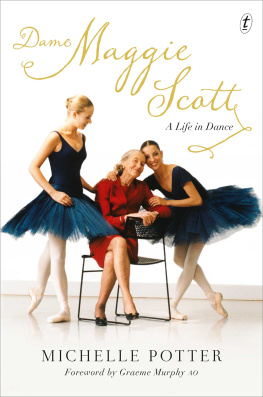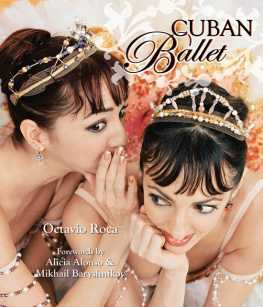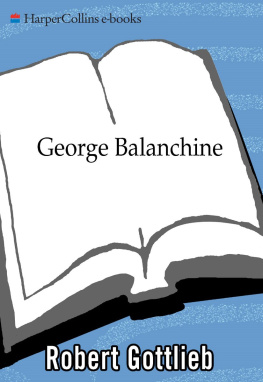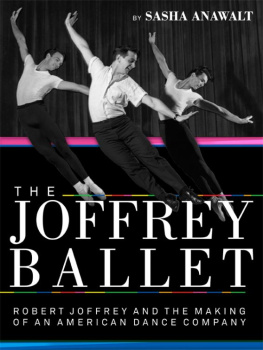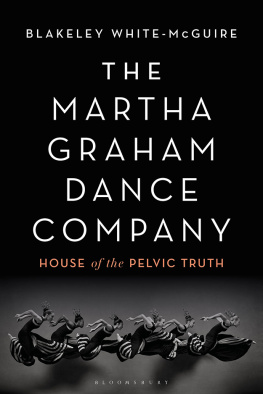As the choreographer Merce Cunningham once put it, You have to love dancing to stick to it. It gives you nothing back, no manuscripts to store away, no paintings to hang in museums, no poems to be printed and sold, nothing but that fleeting moment when you feel alive.
Ken Browar and Deborah Ory, two photographers devoted to dance, are driven by the notion of making the impossible possible: capturing the art forms ephemerality with a camera. In their desire to give something back, they defy logic. Their approach has little to do with static poses. Instead, their lithe subjectsall different, each an individualshape and charge the air with their bodies.
Images are imbued with the idea of flight; skirts stream and swirl around legs like parachutes, spines torque yet never freeze, and arms, extended out, trail off to enhance the bodys frame. Even the hair is free to dance. How is it that a body can grow, seemingly, in a still picture? It has something to do with energetic effort; we may not be able to see the liftoff or landing of a jump, yet, in each of Ken and Deborahs images, we can absorb the before and after, all the while feeling the rush of that fleeting, life-affirming moment.
Just as the more time you spend with dance, the more you glean from itnuance, detail, even subtle strains of spiritualityit becomes apparent that dancers are not generic, one-size-fits-all entities but finite beings that walk and stand differently in the world. Theres a reason Martha Graham referred to a dancer as an athlete of God. They descend, grace us with their gifts, and disappear.
To reveal that moment in which dancers move beyond the physical labyrinth of ligaments and muscles to show who they are in their essence is somehow at the heart of Ken and Deborahs explorations. In one image, PeiJu Chien-Pott, an exceptional Martha Graham dancer, is caught in the air. Floating above the ground with pointed feet and taut, stretched legs, her chest and armsthey are open, relaxed, generousdraw us to her serene face. Is she bathed in moonlight? In this contrast of soft and hard, strong and vulnerable, sylph and woman, Ms. Chien-Pott reveals her immaculate strength and more: how years of training allow a dancer to just let go of rigor and simply be.
What do many of the images have in common? The dancers, as if lost in private worlds, collect our gazes, but dont return them. We feel action, momentum, and force, but, rarely, seduction as they pose in profile with their faces tilted angelically toward the light. Theres more of a heightened alertness as Miriam Miller, an especially elegant member of New York City Ballet, tilts her eyes upward to expose her delicate neck, as well as the sculptural strength of her shoulders. Her black dress, which encloses her ribs snugly with material that gathers to a point at her throatits like an arrow directing us to her facecomes to billowing life when she, in another image, rises in arabesque and its sheer, tiered skirt flutters to the side with emphatic flurry.
Windswept and ravishing, Miller, with raised arms, glances back toward her outstretched leg and, in that instant, you sense the velocity of her body: its breath, its muscular reverberations, its ability to keep growing. Of course, this is where it gets tricky: a photograph can only catch a moment in time, yet Miller, embraced by the space around her, is anything but stationary.
Ken and Deborah work intimately with their subjects, who hail from world-class companies, including American Ballet Theatre, New York City Ballet, the Martha Graham Dance Company, Alvin Ailey American Dance Theater, and the Royal Danish Ballet. In essence, these photographs are collaborations, not only between Ken and Deborah, but between the couple and each dancer. Their subjects training varies, but the photographers dismiss style or technique in favor of the bodys natural flow. On these pages, a dancer is a dancer. And theyre relaxed. Because theyre playing themselves, a gossamer fragility shines through their natural beauty. This is physical expression realized through practice; you see the work in articulation, in execution, but also in the tranquility.
That, in part, must have something to do with the environment. The majority of the photographs are taken in the couples loft in Greenpoint, Brooklyn, which is their home as well as their studio, and where their two cats, Lilly and Olivia, occasionally tiptoe into the frame. (It is their living room too, after all.)
The photographers collaborate with the dancers; every detail is discussed from lighting to position to clothing. The dancers examine images of themselves on a monitor to scrutinize their line before getting back into the shot, knowing that they are in safe hands. The agenda is pure: getting the most beautiful shot imaginable. Daniil Simkin, a Principal at American Ballet Theatre, was their first subject; as such, he began a tradition by signing their daughters bedroom walls. Theyre now covered. A particular favorite: I was here. Alessandra Ferri.
A dancers life is over fast, but with their work, Ken and Deborah are leaving behind traces of motion. Theyre not dances, theyre artifactsand, yes, you can hang them on the wall.
Gia Kourlas writes about dance for the The New York Times and other publications

Daniil Simkin | Principal, American Ballet Theatre
Dance as an art form is bittersweet. On one hand, its beauty is instantaneous and visceral, and on the other, it only exists in a very fleeting moment of now. In one instant, it lives onstage in performance, and in the next moment, it vanishes. While every show is unique and contributes to the flow of life, performances of the same show are never the same. That is part of the beauty and sadness of dance.
The constellation of elements felt right when I arrived for the first shoot with Ken and Deborah at their Greenpoint loft and I felt that this project could result in a very important record of our communitys moments in time.
What attracts me to photography is the beautiful balance between a passing moment in dance and one frozen in time in a photograph. In photography many elements have to align or be aligned in one particular moment of truth to result in a piece of artwhich comes about when the photographer captures that one moment that can live forever. Dance is, of course, comprised of many fleeting moments, but photography can address the evanescence of dance and preserve those moments that would otherwise be just a memory.
As a dancer that has been photographed by Ken and Deborah, I am excited about the opportunity that these photos create to look backwards in timeyears from nowand be able to remember these fleeting moments.
Daniil Simkin
The body is a barometer telling the state of the souls weather to all who can read it.
Martha Graham
Martha Graham had a reverence for the human bodynot only for its physical beauty, but also for all the human intangibles that the tangible form reveals. The belief that a simple, unadorned gesture could make a visceral, revelatory connection to her audience was the essence of her revolution in dance.


